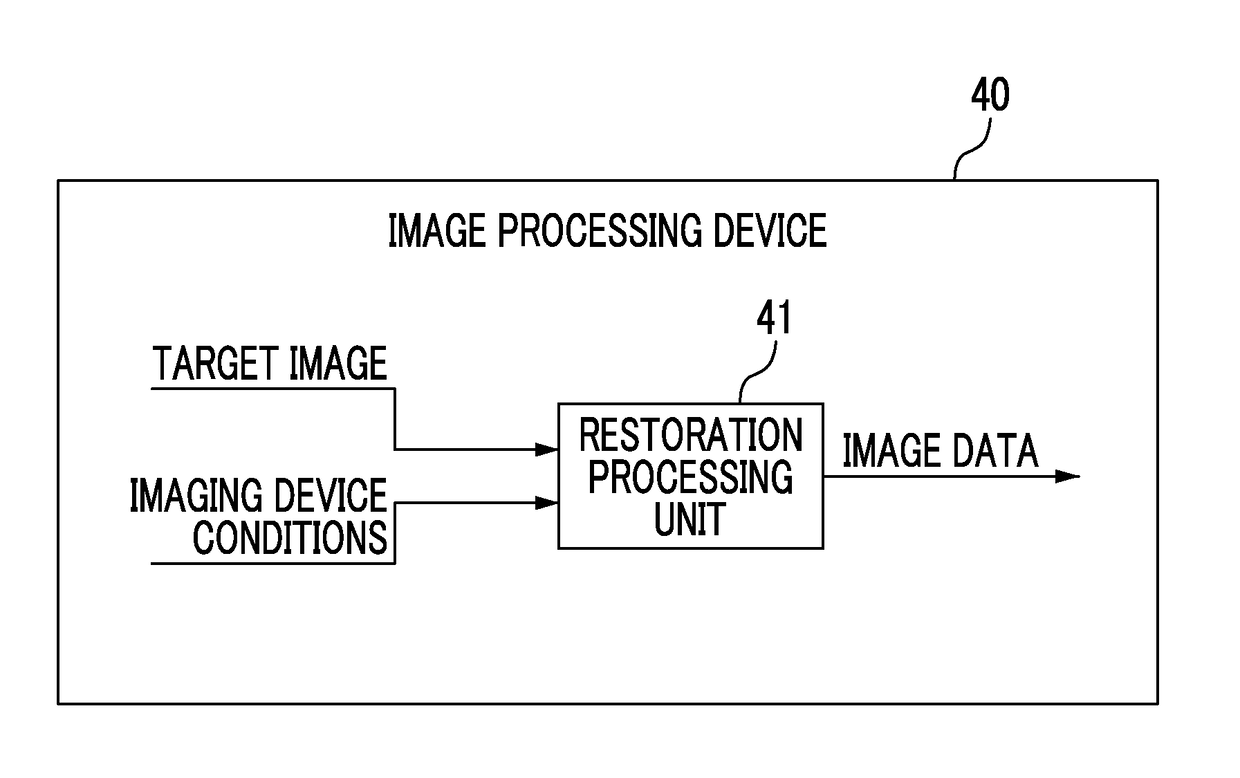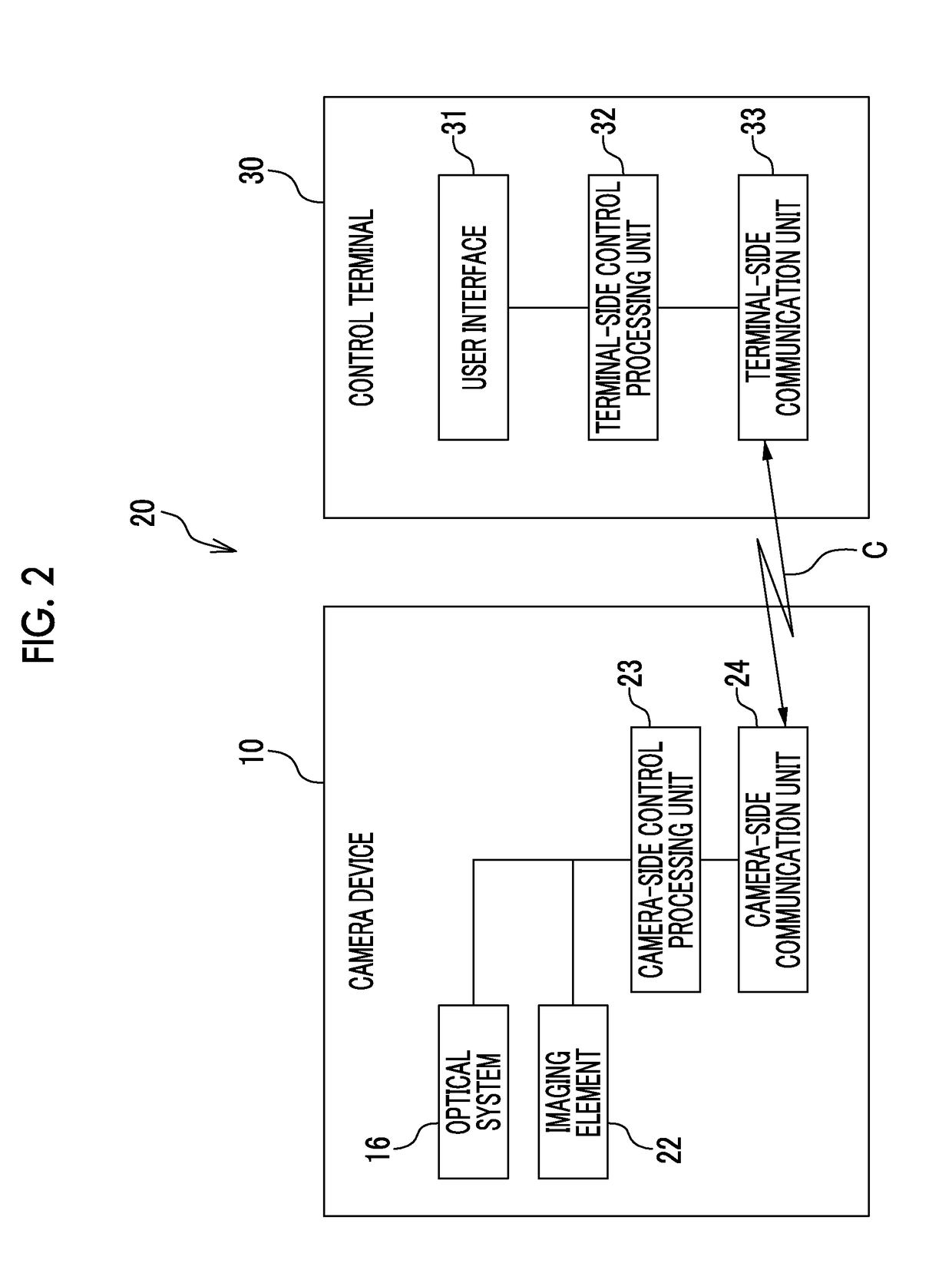Imaging device, image processing device, image processing method, program, and recording medium
a technology of image processing and imaging device, which is applied in the direction of image enhancement, closed-circuit television system, instruments, etc., can solve the problems of reducing the amount of peripheral light of wide-angle lenses, limiting the size and cost of optical systems that can be used in imaging devices, and reducing the quality of target images. , to achieve the effect of improving the quality of target images
- Summary
- Abstract
- Description
- Claims
- Application Information
AI Technical Summary
Benefits of technology
Problems solved by technology
Method used
Image
Examples
example 1
[0229]FIG. 12 is a cross-sectional view illustrating an optical system 16 according to Example 1. The left side of FIG. 12 is an object side (subject side) and the right side thereof is an image side (the side of an image surface Sim).
[0230]The optical system 16 according to this example includes “a first optical element L1, a second optical element L2, a third optical element L3, a fourth optical element L4, and a fifth optical element L5”, a “stop St”, and “a sixth optical element L6, a seventh optical element L7, an eighth optical element L8, a ninth optical element L9, and a tenth optical element L10” which are arranged in this order from the object side.
[0231]In the optical system 16 according to this example, the stop St is fixed between “the first optical element L1, the second optical element L2, the third optical element L3, the fourth optical element L4, and the fifth optical element L5” and “the sixth optical element L6, the seventh optical element L7, the eighth optical ...
example 2
[0245]In this example, the same elements as those in Example 1 are denoted by the same reference numerals and the detailed description thereof will not be repeated.
[0246]FIG. 19 is a cross-sectional view illustrating an optical system 16 according to Example 2.
[0247]The optical system 16 according to this example includes “a first optical element L1, a second optical element L2, a third optical element L3, a fourth optical element L4, a fifth optical element L5, a sixth optical element L6, a seventh optical element L7, and an eighth optical element L8”, a “stop St”, and “a ninth optical element L9, a tenth optical element L10, an eleventh optical element L11, a twelfth optical element L12, a thirteenth optical element L13, and a fourteenth optical element L14” which are arranged in this order from the object side.
[0248]FIG. 20 is a table (Table 6) illustrating the basic data of the optical system 16 according to Example 2. FIG. 20 illustrates a “surface number R”, a “curvature radiu...
example 3
[0263]In this example, the same elements as those in Example 1 are denoted by the same reference numerals and the detailed description thereof will not be repeated.
[0264]FIG. 27 is a cross-sectional view illustrating an optical system 16 according to Example 3.
[0265]The optical system 16 according to this example includes “a first optical element L1, a second optical element L2, a third optical element L3, a fourth optical element L4, a fifth optical element L5, and a sixth optical element L6”, a “stop St”, and “a seventh optical element L7, an eighth optical element L8, a ninth optical element L9, a tenth optical element L10, an eleventh optical element L11, and a twelfth optical element L12” which are arranged in this order from the object side.
[0266]FIG. 28 is a table (Table 12) illustrating the basic data of the optical system 16 according to Example 3. FIG. 28 illustrates a “surface number R”, a “curvature radius r” (mm), a “surface interval d” (mm), an “effective radius er” (m...
PUM
 Login to View More
Login to View More Abstract
Description
Claims
Application Information
 Login to View More
Login to View More - R&D
- Intellectual Property
- Life Sciences
- Materials
- Tech Scout
- Unparalleled Data Quality
- Higher Quality Content
- 60% Fewer Hallucinations
Browse by: Latest US Patents, China's latest patents, Technical Efficacy Thesaurus, Application Domain, Technology Topic, Popular Technical Reports.
© 2025 PatSnap. All rights reserved.Legal|Privacy policy|Modern Slavery Act Transparency Statement|Sitemap|About US| Contact US: help@patsnap.com



